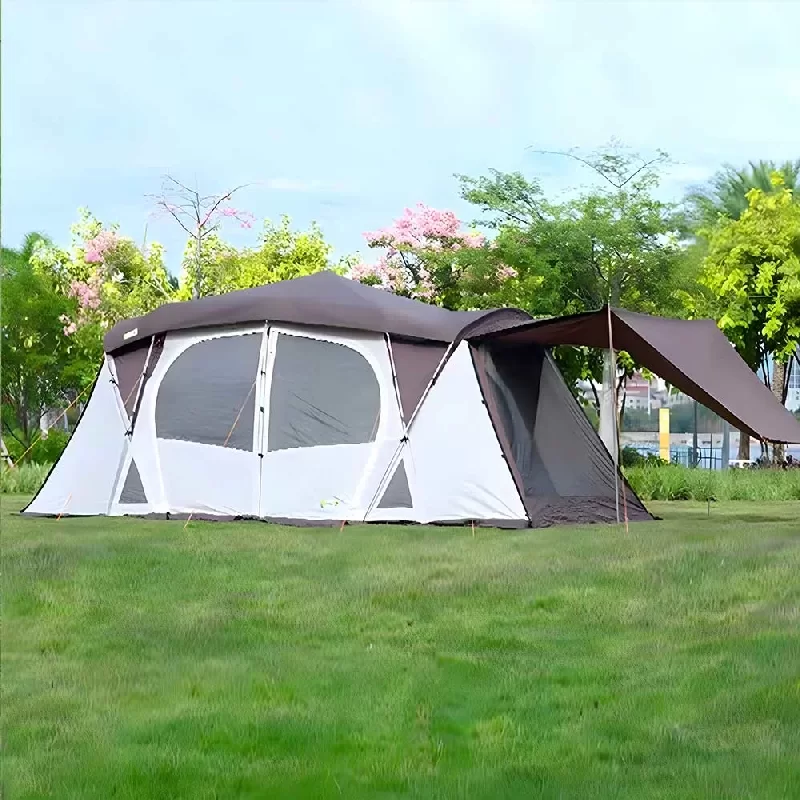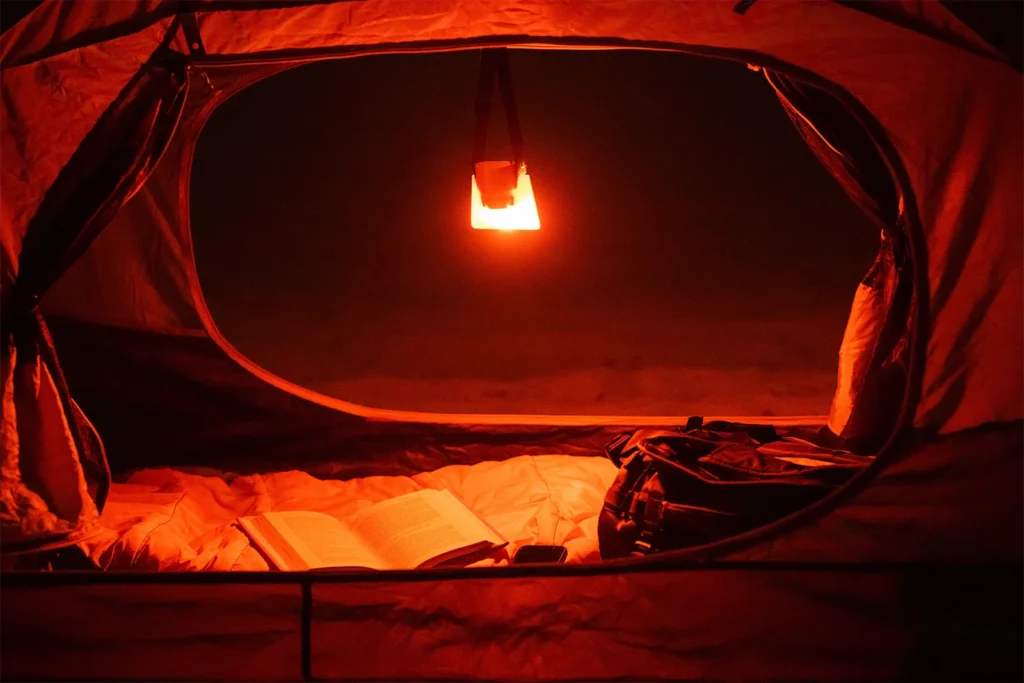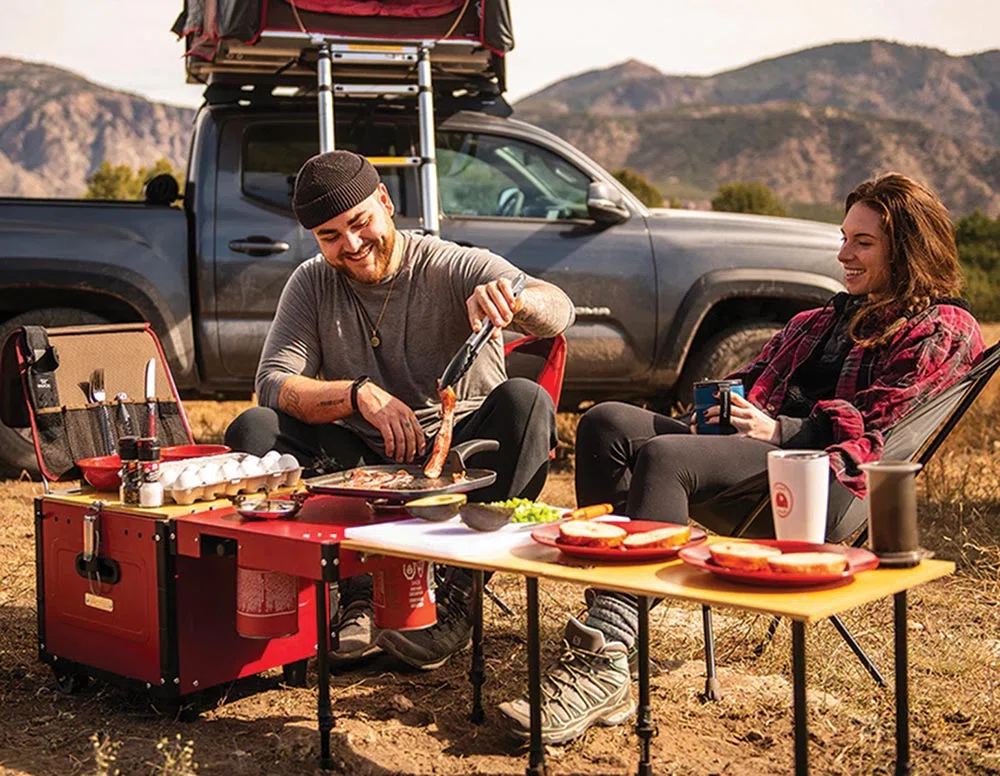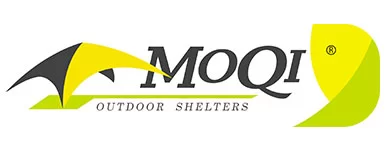1. Choosing the Right tents for camping
Your tent is your home away from home. Selecting the right model will depend on group size, season, and terrain. Here are some popular options:
3-Season Tents: Lightweight and versatile, ideal for spring to fall.
4-Season Tents: Built to withstand snow and high winds for winter camping.
Backpacking Tents: Compact, ultralight designs perfect for hikers.
Family Tents: Spacious interior and multiple rooms for group trips.
Click to view more styles tents for camping

2. Shelter and Site Setup
Most established campsites provide a picnic table, parking spot, and fire ring. However, facilities can vary. Always check whether your site has running water or restrooms before you head out.If the camping site does not have corresponding facilities, you can choose camping shower tent for toilets.
- Groundsheet or footprint to protect the tent floor.
- Extra stakes and guylines for windy conditions.
- Repair kit: pole sleeves, patches, and extra cord.
Most campsites include a picnic table, a place to park your vehicle and a spot to pitch your tent. Many also have shared bathrooms and running water (though you’ll want to check this before setting out).

3. Sleeping Gear
- Sleeping bag rated for the expected low temperature.
- Sleeping pad or air mattress for insulation and comfort.
- Camping pillow or inflatable pillow.
Comfortable sleep is crucial. Even a thin foam pad can make a world of difference in warmth and rest quality.
4. Lighting Solutions
- Headlamps with extra batteries.
- LED lanterns for communal lighting.
- Clip-on tent light for reading inside.

5. Kitchen and Cooking Essentials
Cooking outdoors can be one of the trip’s highlights. A well-stocked camp kitchen makes meal prep a breeze.
- Portable stove with fuel canisters.
- Lightweight cookware set: pots, pans, and utensils.
- Eating utensils, plates, and cups (preferably reusable).
- Cooler with ice or ice substitutes.
- Biodegradable soap, sponge, and trash bags.

6. Tools & Repair Items
- Multi-tool with knife, pliers, and screwdriver.
- Duct tape and paracord.
- Mallet or hammer for tent stakes.
- Small saw or folding axe for firewood.
7. Clothing & Footwear
Packing the right clothes can keep you safe and comfortable. Layering is key.
- Moisture-wicking base
- layers.Insulating mid-layers (fleece or down).Rain jacket and pants/Warm hat, gloves, and socks.
- Durable hiking boots or trail shoes.
- Camp slippers or sandals.

8. Health, Hygiene & Safety
- First-aid kit tailored to your group’s needs.
- Insect repellent and sunscreen.
- Toiletry kit: toothbrush, toothpaste, and toilet paper.
- Hand sanitizer and quick-dry towel.
- Prescription medications.
9. Water & Hydration
Staying hydrated is non-negotiable. Plan for at least two liters per person per day.
- Refillable water bottles or hydration reservoirs.
- Water filter or purification tablets if there’s no potable source.
10. Extras & Entertainment
Optional items can elevate your camp experience:
- Hammock or camp rug.
- Binoculars and field guides.
- Board games, cards, or a book.
- Portable solar charger.
11. Packing Tips & Organization
Keep your gear organized and accessible:
- Use clear plastic bins or stuff sacks.
- Label bags for quick identification.
- Pack heavy items at the bottom of your backpack or car trunk.
Q&A: Common Questions About Tent Camping
Q: How do I choose the right tent size?
A: Consider who will share the tent and whether you need extra space for gear. A one-person tent fits just you, while a three-person tent offers room to store bags inside.
Q: Do I need a sleeping pad if I have a sleeping bag?
A: Yes. A sleeping pad provides insulation from the cold ground and adds comfort, helping you sleep more soundly.
Q: Can I camp without a stove?
A: You can, but it limits your meal options. Consider quick-cook meals, protein bars, or pre-cooked foods if you skip the stove.
For more other questions, visit our FAQ page:https://moqicanopy.com/faq/

